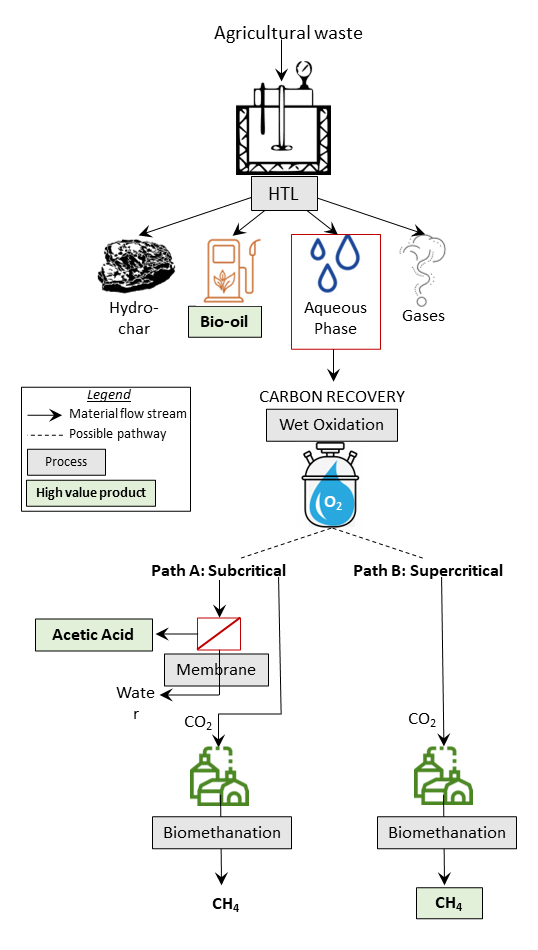Exploring subcritical and supercritical oxidation as pretreatment techniques for membrane separation to recover high-value hydrocarbons from byproducts of hydrothermal liquefaction: A mathematical model
Related Products
Integrating thermochemistry, synthetic biology, and public policy to upcycle the fugitive carbon in hydrothermal liquefaction process water
Wet biomasses such as sludge, manure, agro-industrial processing and food waste are moisture-rich, “low-carbon” wastes. Such feedstocks are typically managed via anaerobic digestion (AD). Yet AD is a suboptimal conversion pathway owing to long residence times and limited recoverable products…
Exploring subcritical and supercritical oxidation as pretreatment techniques for membrane separation to recover high-value hydrocarbons from byproducts of hydrothermal liquefaction: A mathematical model
Agriculture leads to significant waste generation (chicken/cattle manure, food waste, and lignocellulosic biomass). Valorization of these wastes into useful chemicals is important for transitioning to a circular bioeconomy…
AIChE/ACS Frontiers of Chemistry, Materials Science & Chemical Engineering for Circular Economy:
: [ENVR] Division of Environmental Chemistry
AIChE/ACS Frontiers of Chemistry, Materials Science & Chemical Engineering for Circular Economy:
: [ENVR] Division of Environmental Chemistry



